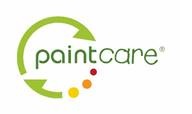Even today, in most states in the nation, leftover paint is usually stored until a household hazardous waste (HHW) day is scheduled. However, according to Earth911, “Most hazardous waste is incinerated instead of recycled.” For the  environmentally conscious consumer, such a solution seems very far from adequate, especially when it has been confirmed that paint can be recycled. In fact, Earth911 reports, “Using 1 gallon of recycled paint instead of new paint saves 100 kilowatt-hours of energy and keeps 115 pounds of carbon dioxide out of the air.”
environmentally conscious consumer, such a solution seems very far from adequate, especially when it has been confirmed that paint can be recycled. In fact, Earth911 reports, “Using 1 gallon of recycled paint instead of new paint saves 100 kilowatt-hours of energy and keeps 115 pounds of carbon dioxide out of the air.”
The US Environmental Protection Agency (EPA) estimates that as much as ten percent, or 78 million gallons, of architectural paint is left over every year.
Fortunately for the environment, in eight states and the District of Columbia an industry trade association has successfully addressed the prior lack of recycling opportunities for paint. In 2009, NERC Advisory Member American Coatings Association (ACA), a membership-based trade association of the paint manufacturing industry, created PaintCare as a three-year pilot program in Oregon.
“After successfully demonstrating that the industry can design and deliver a program for post-consumer paint management,” stated Marjaneh Zarrehparvar, executive director of PaintCare, “the Oregon program became permanent through legislation in July 2013.” By 2016, the PaintCare program spread to seven more states—California, Colorado, Connecticut, Maine, Minnesota, Oregon, Rhode Island, and Vermont—and the District of Columbia.
Nearly 10 years since passage of that first law in Oregon, the nine programs provide 1,772 conveniently located postconsumer paint drop-off sites for the public. Paint retail stores make up 76% of the sites. In PaintCare states, well over 90% of residents live within 15 miles of a drop-off location. Drop-off sites accept house paint and primers, stains, sealers, and clear coatings (e.g., shellac and varnish) but do not accept aerosols (spray cans), solvents, and products intended for industrial or non-architectural use. Recruiting and maintaining this large network of drop-off sites, along with transportation, processing, and public education, is funded by fees paid by consumers when they purchase new paint in their state.
The program has also managed paint from more than 4,144 household hazardous waste and paint collection events, 3,083 large volume direct picks-ups (from painting contractor and other entities with more than 200 gallons of accumulated paint) and held 169 PaintCare-operated paint drop-off events in underserved communities. The program is collecting about 593,000 gallons of postconsumer paint per month and has collected just over 34.1 million gallons since it started. The large majority is water (latex) based, and the remainder is oil and solvent-based paints.
“PaintCare joined NERC because we value what the coalition does to convene likeminded organizations facing shared opportunities and challenges in the region,” stated Zarrehparvar. “By participating in NERC, we see the chance to educate consumers about the program and the benefits of the paint take-back laws.”
At NERC’s Fall 2018 Conference, PaintCare received the 2018 Environmental Sustainability Leadership Award. In accepting the award, Ms. Zarrehparvar stated, “We are honored to receive this award recognizing the hard work of our state managers, Laura Honis and John Hurd, and the commitment of our hundreds of retail partners and municipal household hazardous waste collection programs across New England. We also thank our partners in each state's oversight agencies, whose leadership has enabled the local PaintCare programs to grow and thrive.”

